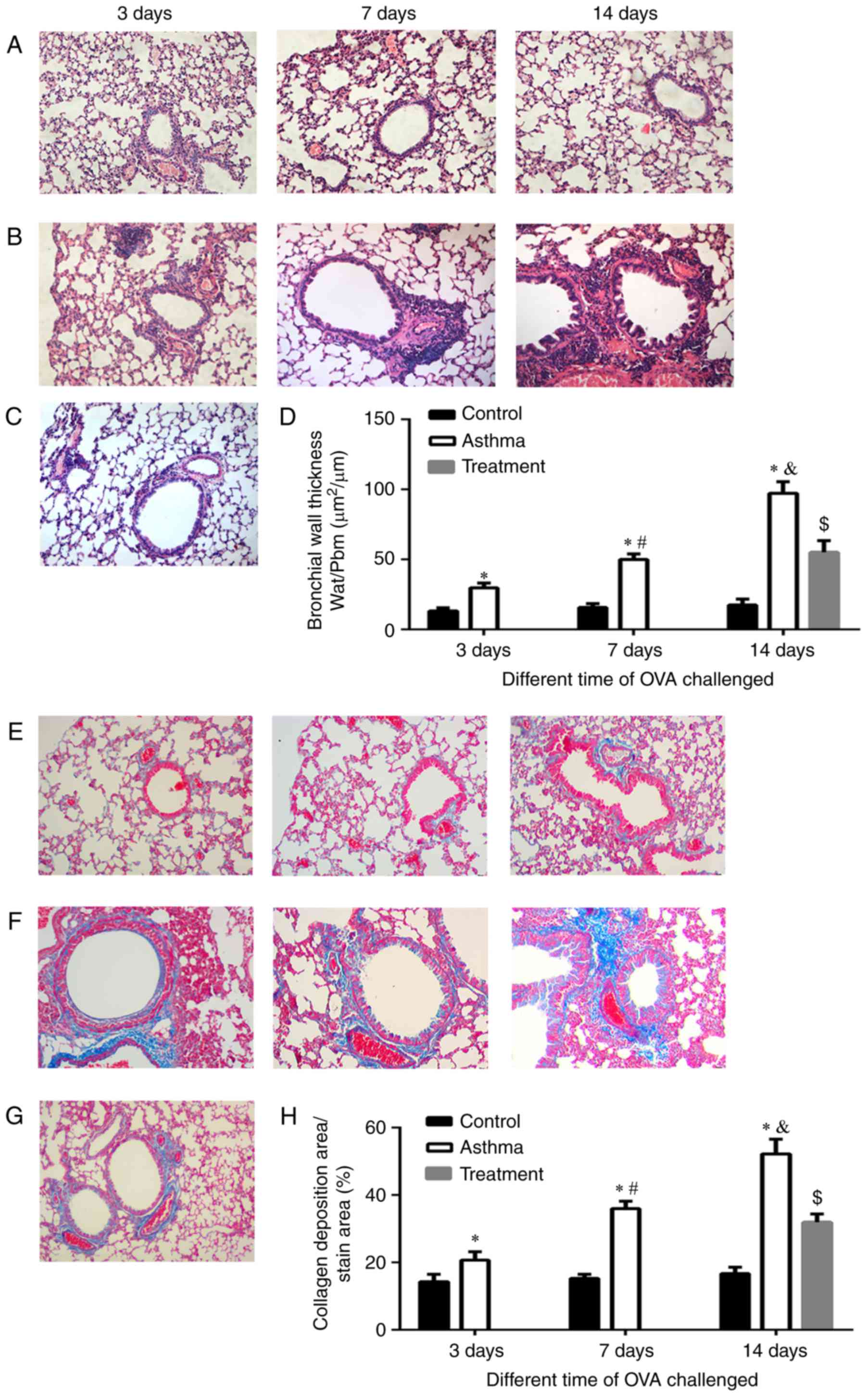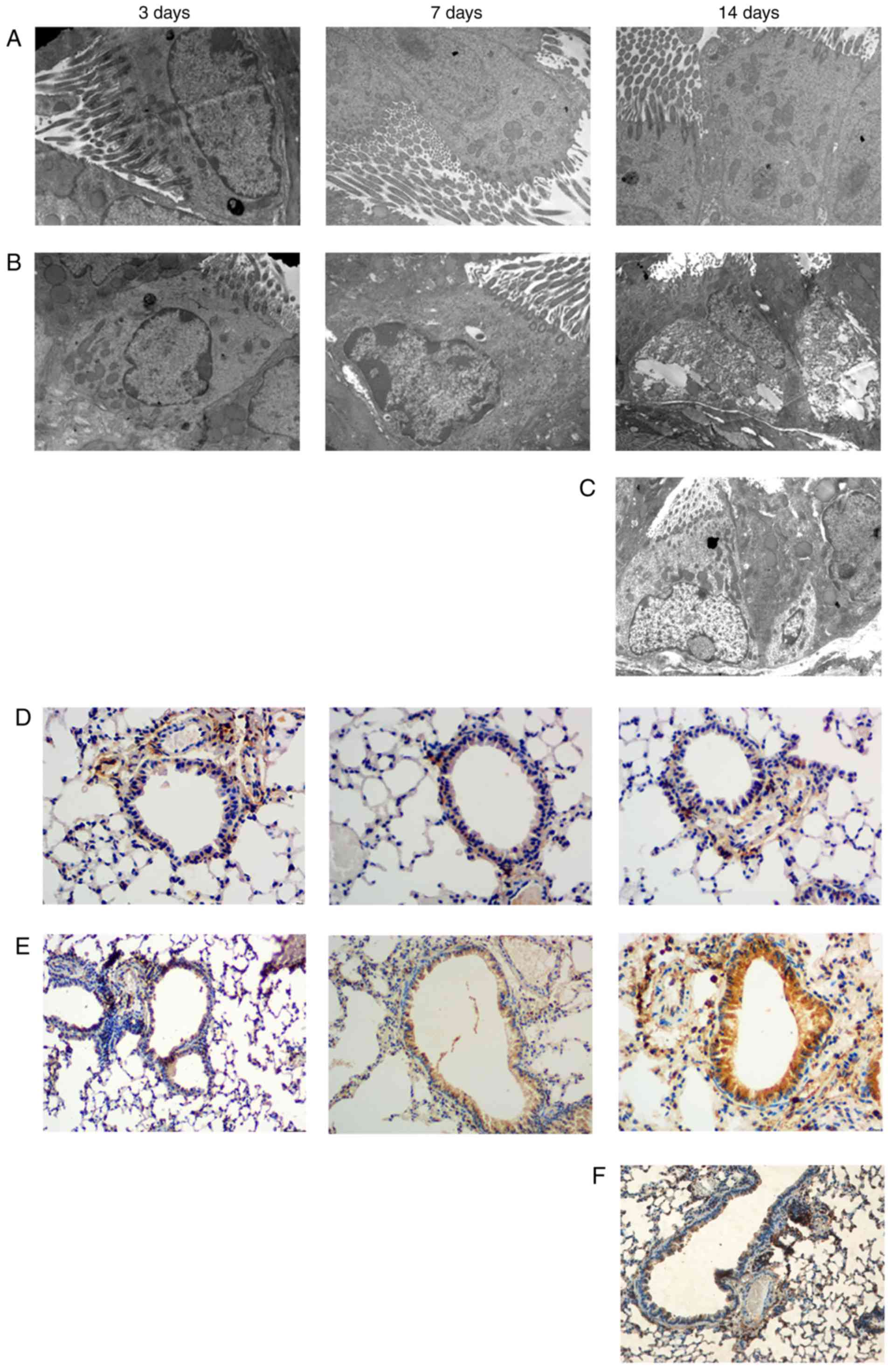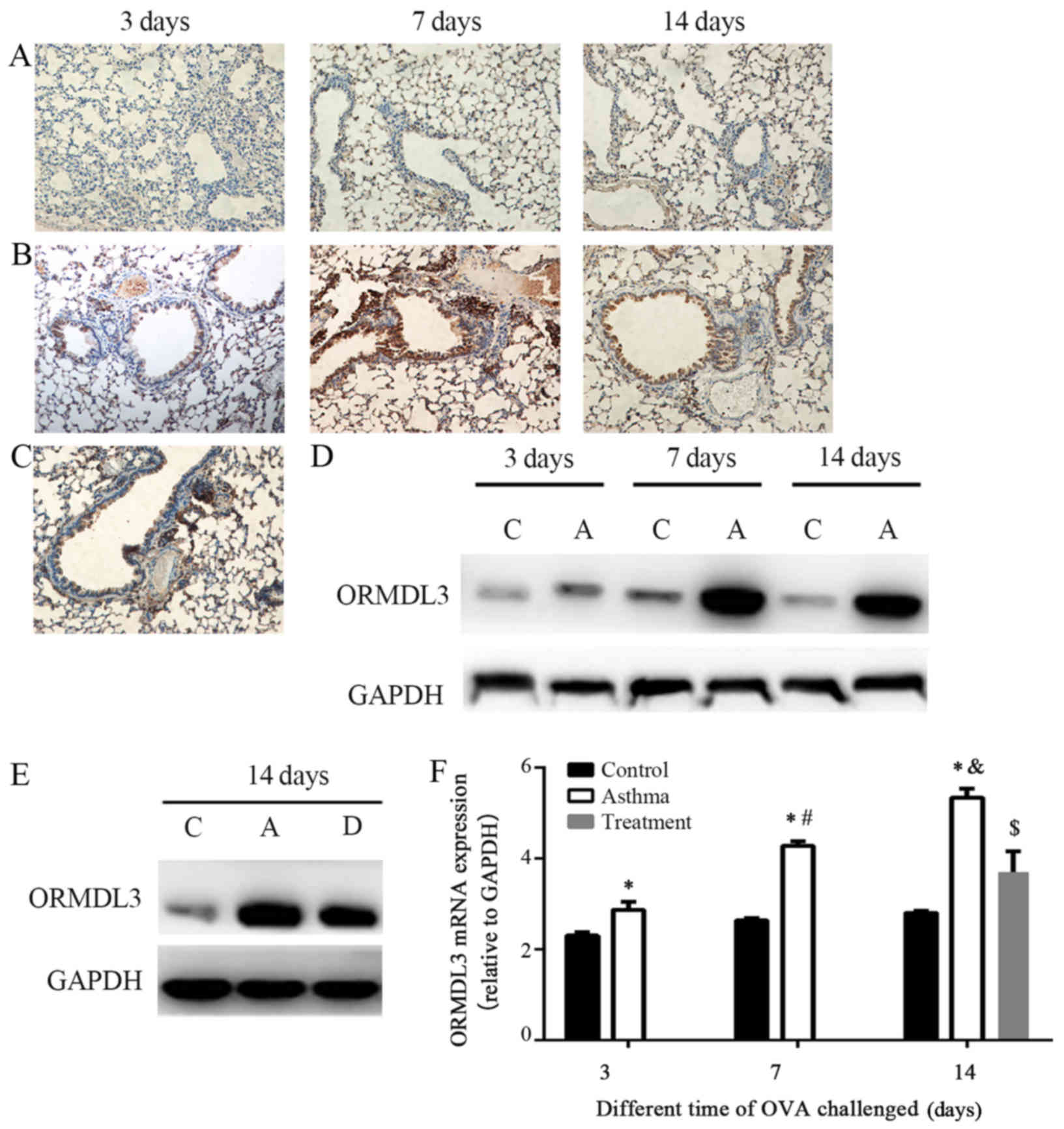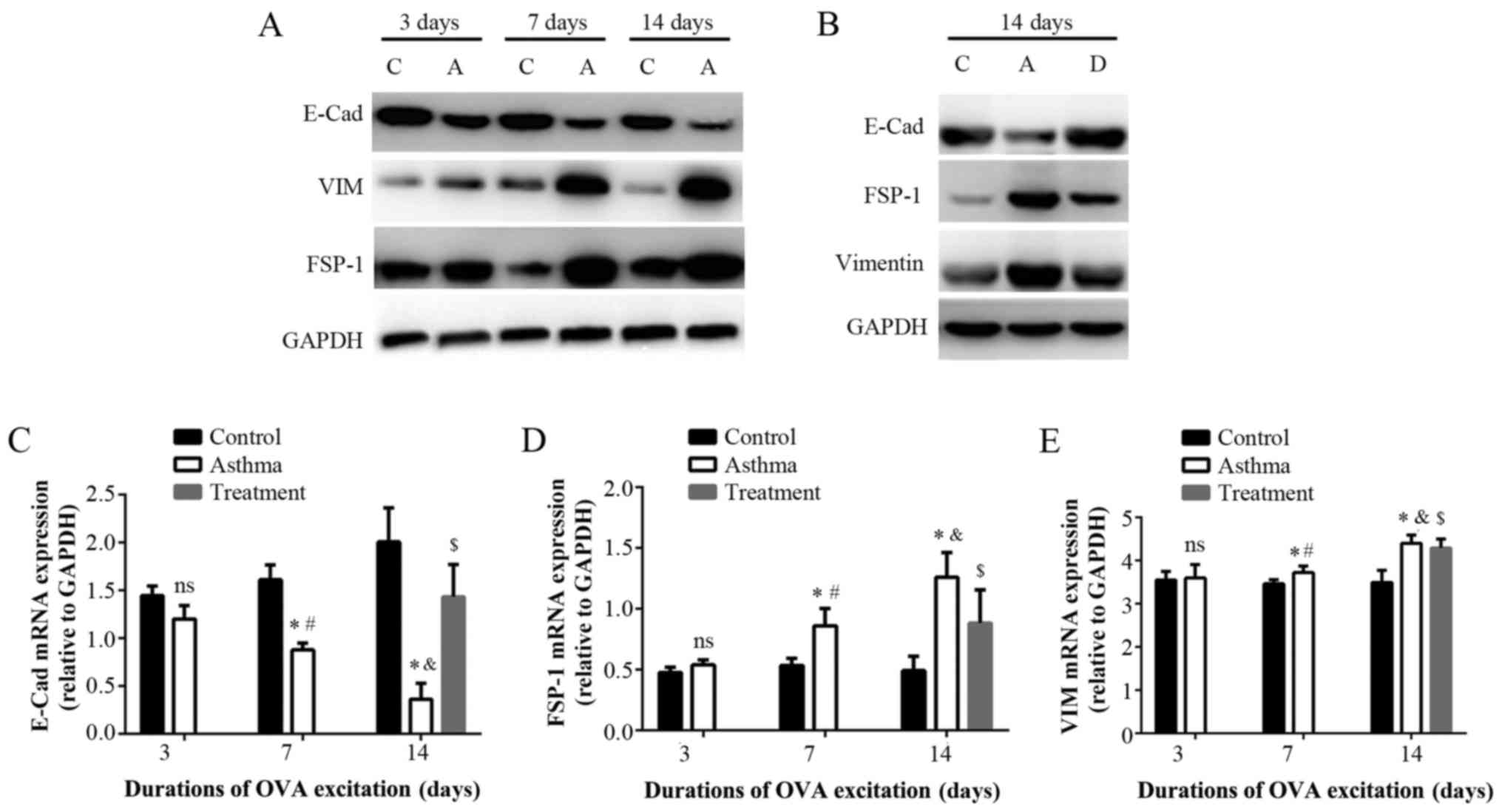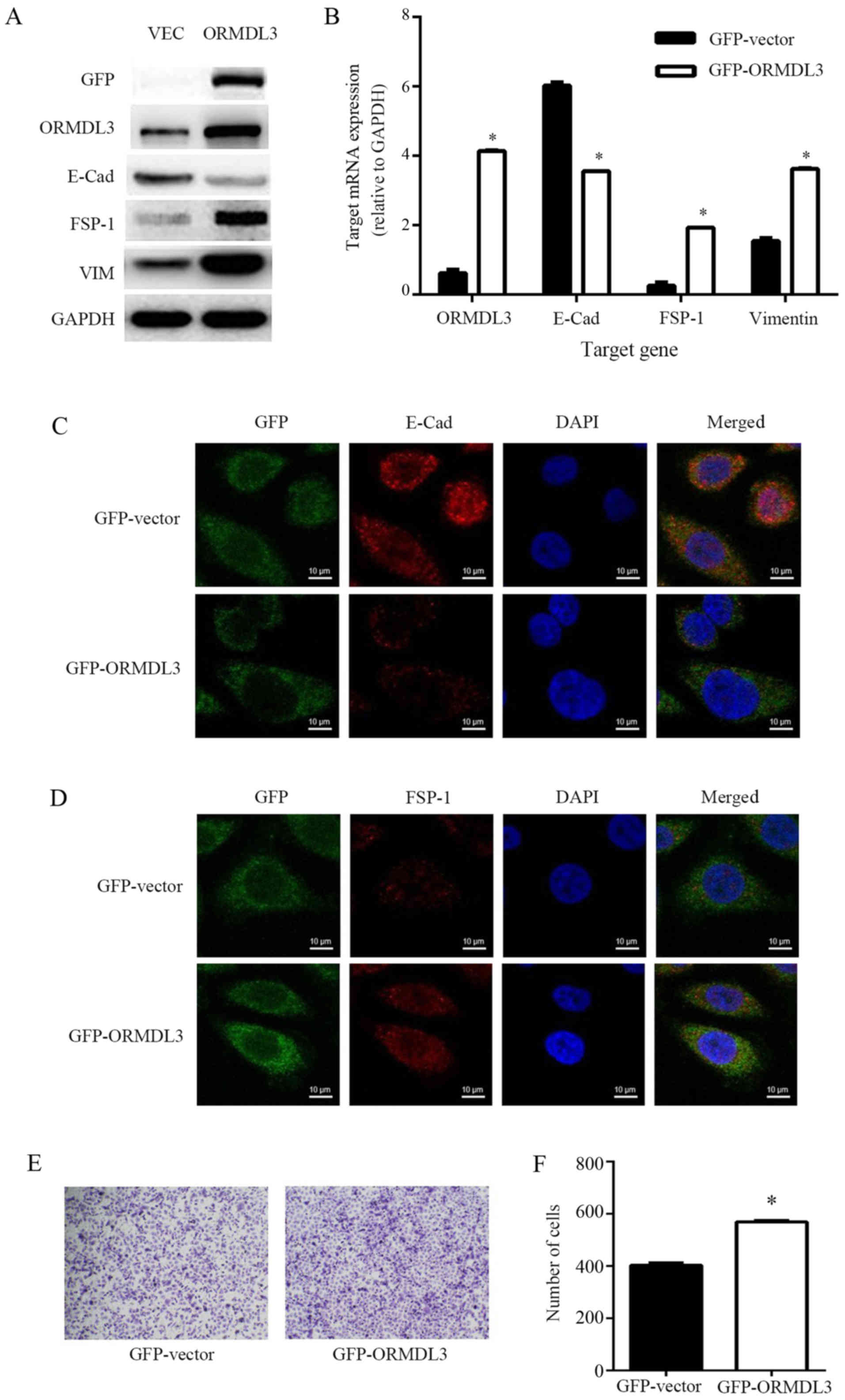|
1
|
Anderson GP: Endotyping asthma: New
insights into key pathogenic mechanisms in a complex, heterogeneous
disease. Lancet. 372:1107–1119. 2008. View Article : Google Scholar : PubMed/NCBI
|
|
2
|
Moffatt MF, Kabesch M, Liang L, Dixon AL,
Strachan D, Heath S, Depner M, von Berg A, Bufe A, Rietschel E, et
al: Genetic variants regulating ORMDL3 expression contribute to the
risk of childhood asthma. Nature. 448:470–473. 2007. View Article : Google Scholar : PubMed/NCBI
|
|
3
|
Balantic M, Rijavec M, Flezar M, Camlek T,
Hudoklin I, Kosnik M, Korosec P and Suskovic S: A polymorphism in
ORMDL3 is associated not only with asthma without rhinitis but also
with chronic obstructive pulmonary disease. J Investig Allergol
Clin Immunol. 23:256–261. 2013.PubMed/NCBI
|
|
4
|
Holgate ST: The sentinel role of the
airway epithelium in asthma pathogenesis. Immunol Rev. 242:205–219.
2011. View Article : Google Scholar : PubMed/NCBI
|
|
5
|
Hackett TL: Epithelial-mesenchymal
transition in the pathophysiology of airway remodelling in asthma.
Curr Opin Allergy Clin Immunol. 12:53–59. 2012. View Article : Google Scholar : PubMed/NCBI
|
|
6
|
Johnson JR, Roos A, Berg T, Nord M and
Fuxe J: Chronic respiratory aeroallergen exposure in mice induces
epithelial-mesenchymal transition in the large airways. PLoS One.
6:e161752011. View Article : Google Scholar : PubMed/NCBI
|
|
7
|
Miller M, Rosenthal P, Beppu A, Mueller
JL, Hoffman HM, Tam AB, Doherty TA, McGeough MD, Pena CA, Suzukawa
M, et al: ORMDL3 transgenic mice have increased airway remodeling
and airway responsiveness characteristic of asthma. J Immunol.
192:3475–3487. 2014. View Article : Google Scholar : PubMed/NCBI
|
|
8
|
Miller M, Tam AB, Cho JY, Doherty TA, Pham
A, Khorram N, Rosenthal P, Mueller JL, Hoffman HM, Suzukawa M, et
al: ORMDL3 is an inducible lung epithelial gene regulating
metalloproteases, chemokines, OAS, and ATF6. Proc Natl Acad Sci
USA. 109:16648–16653. 2012. View Article : Google Scholar : PubMed/NCBI
|
|
9
|
Hjelmqvist L, Tuson M, Marfany G, Herrero
E, Balcells S and Gonzàlez-Duarte R: ORMDL proteins are a conserved
new family of endoplasmic reticulum membrane proteins. Genome Biol.
3:RESEARCH00272002. View Article : Google Scholar : PubMed/NCBI
|
|
10
|
Meyer-Martin H, Reuter S and Taube C:
Mouse models of allergic airway disease. Methods Mol Biol.
1193:127–141. 2014. View Article : Google Scholar : PubMed/NCBI
|
|
11
|
Shin YS, Takeda K and Gelfand EW:
Understanding asthma using animal models. Allergy Asthma Immunol
Res. 1:10–18. 2009. View Article : Google Scholar : PubMed/NCBI
|
|
12
|
James AL, Hogg JC, Dunn LA and Paré PD:
The use of the internal perimeter to compare airway size and to
calculate smooth muscle shortening. Am Rev Respir Dis. 138:136–139.
1988. View Article : Google Scholar : PubMed/NCBI
|
|
13
|
Palmans E, Kips JC and Pauwels RA:
Prolonged allergen exposure induces structural airway changes in
sensitized rats. Am J Respir Crit Care Med. 161:627–635. 2000.
View Article : Google Scholar : PubMed/NCBI
|
|
14
|
Galanter J, Choudhry S, Eng C, Nazario S,
Rodríguez-Santana JR, Casal J, Torres-Palacios A, Salas J, Chapela
R, Watson HG, et al: ORMDL3 gene is associated with asthma in three
ethnically diverse populations. Am J Respir Crit Care Med.
177:1194–1200. 2008. View Article : Google Scholar : PubMed/NCBI
|
|
15
|
Leung TF, Sy HY, Ng MC, Chan IH, Wong GW,
Tang NL, Waye MM and Lam CW: Asthma and atopy are associated with
chromosome 17q21 markers in Chinese children. Allergy. 64:621–628.
2009. View Article : Google Scholar : PubMed/NCBI
|
|
16
|
Yu X, Yu C, Ren Z, Deng Y, Song J, Zhang H
and Zhou H: Genetic variants of 17q21 are associated with
childhood-onset asthma and related phenotypes in a northeastern Han
Chinese population: A case-control study. Tissue Antigens.
83:330–336. 2014. View Article : Google Scholar : PubMed/NCBI
|
|
17
|
Zhe J, Xin C, Qiang W and Hong L: Study of
Association between ORMDL3 expression level, life-style characters,
indoor air qualifies and childhood asthma in Beijing. J Med Res.
39:22–25. 2010.
|
|
18
|
Donato R, Cannon BR, Sorci G, Riuzzi F,
Hsu K, Weber DJ and Geczy CL: Functions of S100 proteins. Curr Mol
Med. 13:24–57. 2013. View Article : Google Scholar : PubMed/NCBI
|
|
19
|
Yu F, Sun Y, Yu J, Ding Z, Wang J, Zhang
L, Zhang T, Bai Y and Wang Y: ORMDL3 is associated with airway
remodeling in asthma via the ERK/MMP-9 pathway. Mol Med Rep.
15:2969–2976. 2017. View Article : Google Scholar : PubMed/NCBI
|
|
20
|
Rae MT, Price D, Harlow CR, Critchley HO
and Hillier SG: Glucocorticoid receptor-mediated regulation of MMP9
gene expression in human ovarian surface epithelial cells. Fertil
Steril. 92:703–708. 2009. View Article : Google Scholar : PubMed/NCBI
|
|
21
|
Zou LP, Zhang X, Zhang Y, Xu XJ and Wang
TF: Down-regulatory effects of budesonide on expression of STAT6
and ORMDL3 in lung tissues of asthmatic mice. Zhongguo Dang Dai Er
Ke Za Zhi. 16:198–202. 2014.(In Chinese). PubMed/NCBI
|
|
22
|
Cantero-Recasens G, Fandos C,
Rubio-Moscardo F, Valverde MA and Vicente R: The asthma-associated
ORMDL3 gene product regulates endoplasmic reticulum-mediated
calcium signaling and cellular stress. Hum Mol Genet. 19:111–121.
2010. View Article : Google Scholar : PubMed/NCBI
|
|
23
|
Siow D, Sunkara M, Dunn TM, Morris AJ and
Wattenberg B: ORMDL/serine palmitoyltransferase stoichiometry
determines effects of ORMDL3 expression on sphingolipid
biosynthesis. J Lipid Res. 56:898–908. 2015. View Article : Google Scholar : PubMed/NCBI
|
|
24
|
Tanjore H, Cheng DS, Degryse AL, Zoz DF,
Abdolrasulnia R, Lawson WE and Blackwell TS: Alveolar epithelial
cells undergo epithelial-to-mesenchymal transition in response to
endoplasmic reticulum stress. J Biol Chem. 286:30972–30980. 2011.
View Article : Google Scholar : PubMed/NCBI
|
|
25
|
Breslow DK, Collins SR, Bodenmiller B,
Aebersold R, Simons K, Shevchenko A, Ejsing CS and Weissman JS: Orm
family proteins mediate sphingolipid homeostasis. Nature.
463:1048–1053. 2010. View Article : Google Scholar : PubMed/NCBI
|



